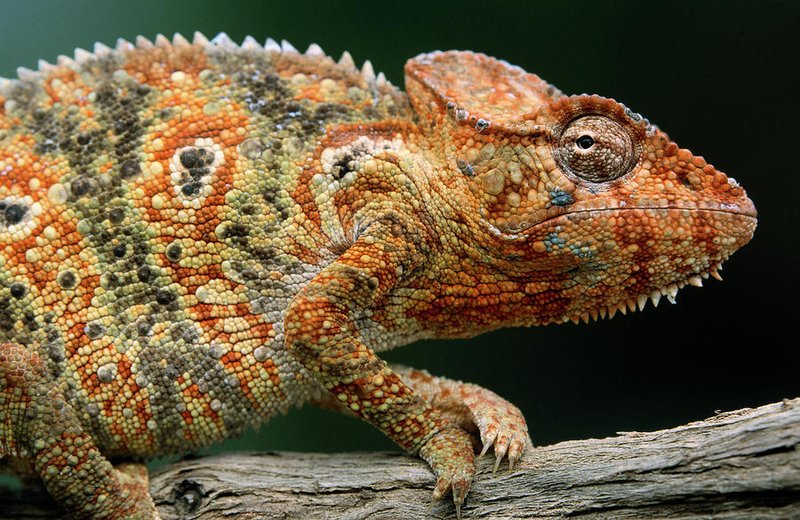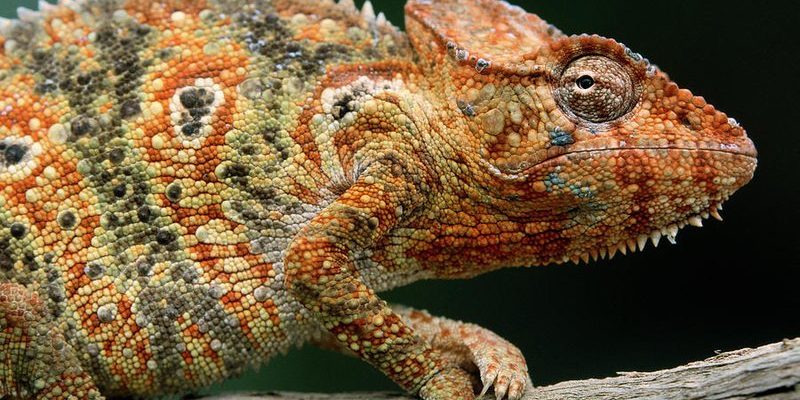
Think of the Oustalet’s chameleon as a unique character in the animal kingdom. With its ability to change colors and blend into different environments, it resembles a magician of sorts. But when it comes to personality, the question of whether it’s aggressive or friendly depends on several factors, including its habitat, care, and your interaction with it. So, let’s explore the Oustalet’s chameleon in a bit more detail to unravel this mystery.
Understanding the Oustalet’s Chameleon
The Oustalet’s chameleon, or *Furcifer oustaleti*, is one of the largest chameleons in the world. Native to Madagascar, it can grow up to 2 feet long, making it quite a sight to behold. Its appearance varies from deep greens to striking yellows and blues, depending on mood and environment. Honestly, these stunning visuals are just one reason why people are drawn to them.
You might be wondering why someone would choose a chameleon as a pet. Well, their fascinating ability to change colors is more than just for show. They change shades based on temperature, stress levels, and even emotions! This means that each interaction can be different, making it an exciting experience for both the owner and the chameleon.
Additionally, the Oustalet’s chameleon has a unique way of navigating its environment. They have specialized feet and eyes that allow them to grip branches accurately and look in two directions at once. This makes them excellent climbers and adds to the fun of watching them in their habitat.
Chameleon Behavior: Aggressive or Friendly?
When it comes to temperament, the Oustalet’s chameleon tends to be more on the shy side. They prefer to avoid confrontations rather than engage in aggressive behavior. However, aggression can still occur, especially if they feel threatened. For instance, if a chameleon perceives a human or another animal as a potential predator, it might display aggressive body language, like puffing up its body and changing colors.
This doesn’t mean you can’t bond with your chameleon. With proper care and a calm environment, many owners report that their Oustalet’s chameleons become accustomed to them over time. Patience and gentle handling can lead to a more relaxed creature, but it’s important to always respect its boundaries. Here’s the thing: if you approach it too quickly or stress it out, you’re more likely to see the aggressive side.
If you’re considering having an Oustalet’s chameleon, keep an eye on its behavior. Look out for signs like tail curling, body puffing, or darkening colors, which may indicate discomfort. Understanding their mood can help you determine how to interact appropriately.
Creating a Friendly Environment
To encourage a friendly temperament in your Oustalet’s chameleon, the environment is key. Start with a spacious terrarium that mimics their natural habitat. Use branches, leaves, and plants to create climbing areas and hiding spots. A well-designed environment helps reduce stress, making your chameleon feel secure.
Temperature and humidity are crucial as well. These creatures thrive in warm, humid conditions, so having a heat lamp and a misting system can create the right atmosphere. A happy and healthy chameleon is more likely to be calm and friendly, allowing for better interaction.
Also, don’t forget about diet. Feeding your chameleon a varied diet of insects, like crickets and mealworms, helps it stay healthy and active. A well-fed chameleon is less likely to be irritable or aggressive, making your bonding time more enjoyable.
Handling Your Oustalet’s Chameleon
Handling an Oustalet’s chameleon can be tricky. They’re not like dogs that love to be petted; instead, they might see human interaction as a potential threat. If you want to develop a friendly relationship, the key is to start slowly.
Begin by simply observing your chameleon in its habitat. Let it get used to your presence without direct interaction. Once it seems comfortable, you can try to gently offer your hand. It’s wise to let it crawl onto your hand rather than grabbing it. This way, it feels in control of the situation.
Over time, you might find that your chameleon becomes more tolerant of handling. But remember, some days are better than others. If your chameleon seems stressed, it’s best to give it space and try again later. Patience is important here.
Common Misconceptions About Chameleons
You might have heard that chameleons are either cuddly pets or fierce little beasts. The truth is, they fall somewhere in between. Many people mistakenly think that all chameleons are aggressive. However, the Oustalet’s chameleon typically prefers to retreat rather than fight.
Another misconception is that they can be trained like dogs or cats. While they can learn to recognize their owners and might become more comfortable over time, they are not social animals that seek out human interaction or affection.
It’s essential to have realistic expectations. Your Oustalet’s chameleon will likely enjoy observing you from a distance rather than seeking out playtime. Embrace their unique nature, and you’ll develop a rewarding relationship.
So, is the Oustalet’s chameleon aggressive or friendly? The answer is that it tends to be shy and more on the defensive side. With the right environment, patience, and gentle handling, you can encourage a more relaxed demeanor.
These fascinating reptiles may not cuddle up like a dog, but they offer a unique experience that comes from observing their behaviors and interactions. Just remember, each chameleon is an individual with its own personality. Understanding and respecting that will help you forge a strong bond with your pet.
In the end, owning an Oustalet’s chameleon can be an incredible journey. With the right care, you can enjoy the marvelous world of these colorful creatures while respecting their natural instincts.

